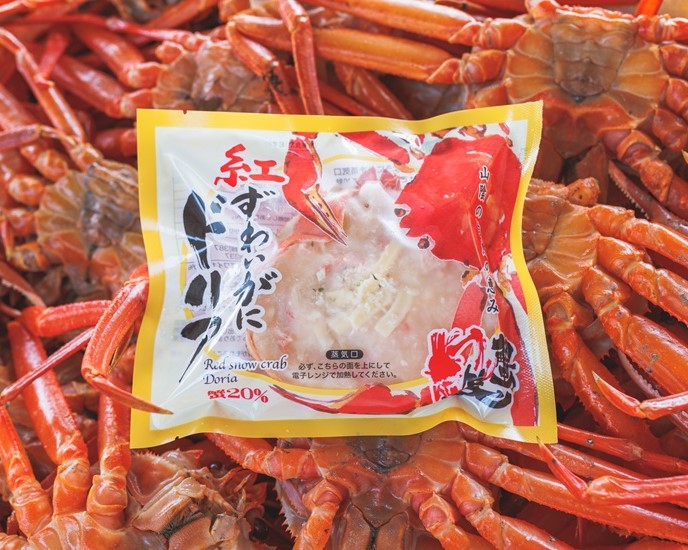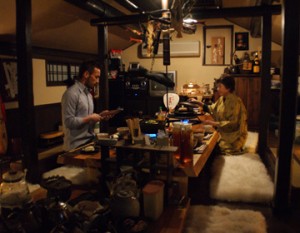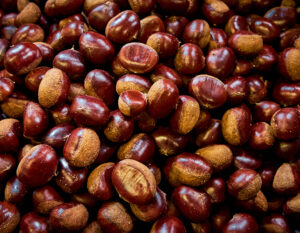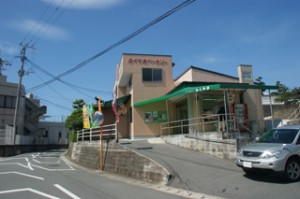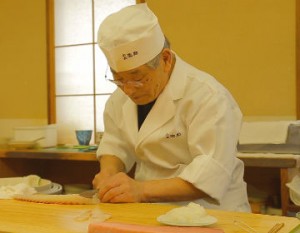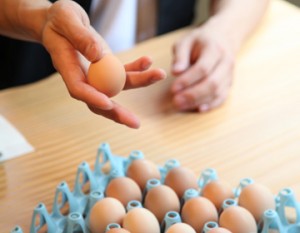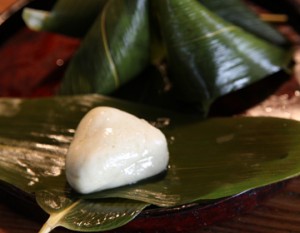Sakaiminato in western Tottori Prefecture boasts one of the largest landings of snow crab in Japan. Sakaiminato boasts the largest catch of red snow crab in Japan, and many processors offer their own unique products. Among them, Maeda Suisan’s crab rice and doria, which are made with freshly caught red snow crab, are attracting attention.
Sakaiminato, one of the largest crab landings in Japan

Sakaiminato City, adjacent to Yonago City in Tottori Prefecture and Matsue City in Shimane Prefecture, is located on the northern tip of the Yumigahama Peninsula, surrounded on three sides by the Sea of Japan, and boasts the largest catch of red snow crab in Japan.
Sakaiminato is also known as the “distribution center of western Japan” because of the variety of seafood landed throughout the year: firefly squid in spring, fresh bluefin tuna in summer, Matsuba crab and red snow crab from fall to winter, and mackerel, sardines, and squid. It is also known as the “distribution center of western Japan” because of its abundance of crab processing plants, which attract crabs from all over the country.
Tottori is proud of its Matsuba crab and red snow crab
There are two main types of crabs caught in Sakaiminato: Matsuba crab and red snow crab. Matsuba crab is another name for male snow crab, which is caught in the Japan Sea in the San’in region. It is found at depths of 200 to 500 meters and has a tough shell with a dense meat. It can be eaten raw, cooked, frozen, or any other way. On the other hand, red snow crabs live in the deep sea at around 1,000 meters and have soft shells with high water content. It is juicy and has a sweetness unique to the crab, but because of its high water content, it loses its freshness quickly. In addition, once frozen, the crab tends to drip when thawed, and the flavor is lost. The skill of each processor is to keep the crab fresh and process it in the most delicious way possible.
Maeda Suisan, which has steered the company away from sardines to processing crabs

Among the various processing companies, Tetsuya Maeda of Maeda Suisan is the one who has been working on side dishes that are easy for consumers to eat without losing the flavor of crab. The company was founded in 1960, when Maeda’s grandfather ran a dried sardine processing plant in Shikoku. Later, affected by a decline in fish catches, he looked for another port and ended up in Sakaiminato.
At first, they caught sardines by seine fishing and processed them by drying them in the sun, but the catch of sardines decreased in Sakaiminato as well. When they realized that they needed to process other fish as well as sardines, the processing of red snow crabs became the talk of the town, and they turned their attention to processing crabs.
Seeking added value that only we can provide
Since 1985, however, crab catches have been on the decline. His father had told him that he had the option of closing the company, but he could not simply quit when he thought about the results he had achieved and the employees he had hired. Without a clear answer, his predecessor passed away, and Mr. Maeda took over the company at the age of 33. As he searched for a direction for the company, Mr. Maeda said, “I still want to deliver the deliciousness of Sakaiminato crabs. I want to produce not only boiled peeled crabs, but also processed products with special characteristics that will not be affected by the decline in resources.
Developed “Kani Okowa” (rice topped with crab), an easy-to-eat crab dish

From there, the company enlisted the help of experts and repeatedly made prototypes of side dishes that could be easily eaten with crab. The result was “Red Snow Crab and Crab Okowa,” which can be easily heated in a microwave and also makes use of the crab’s shell. The cooking liquid from boiling the crab meat was used in a luxurious way to enhance the flavor of the crab. The rice is made from locally produced “Himenomochi” glutinous rice, which is known for its firmness. The glutinous rice is glutinous, has no crab smell, and is not too strong. The result is a refreshing crab rice bowl.

At the beginning of its development, the company asked the cooperation of Japanese-style pubs and inns that had been wholesaling peeled crab for some time, and offered it to visitors to Tottori. The rice with full of crab flavor was very popular, and the recognition of crab rice gradually increased.
The packaging was also designed to make it a popular choice as a souvenir of Tottori at souvenir stores and online stores. The product can be defrosted in a microwave oven without removing the crab shell by hand, which “has helped to popularize crab,” says Maeda.
In addition, as word spread that Maeda Suisan is capable of processing products other than peeled crab, the company received an increasing number of inquiries asking if it could make something like this. In addition to its own products, Maeda Suisan also developed and sold side dishes for Osechi cuisine and gifts for department stores, and the production of okowa and other processed products became a major source of support in terms of management.
In 2010, the company won the top prize at the “Miyako Tottori Specialty Food Contest,” a gathering of Tottori Prefecture’s specialty products, for its convenience and taste. In 2011, the company received the Minister of Agriculture, Forestry and Fisheries Award, the highest award in the new product development category of the “Central Contest for Superior Hometown Foods,” which recognizes food products that make the most of regional characteristics. This was the first time for a product to win the Minister of Agriculture, Forestry and Fisheries Award in Tottori Prefecture as a whole, and the company’s name recognition has increased.
The secret to the delicious taste is the ingenious heating process and the oil that locks in the flavor.

The flavor of crab is sensitive to heat, and the aroma will be lost if too much time passes after heating. In addition, since red snow crab contains a lot of water, it is important to minimize dripping after thawing.
Maeda Suisan does not simply boil the snow crab to preserve its flavor, but also steams or bakes it to suit the product. The heating time is also thoroughly adjusted according to the individual differences in the crabs, so that the chewiness and flavor of the meat is preserved to the maximum extent possible.
In addition, to enhance the crab’s flavor and deliciousness, we have developed an original crab flavor oil called “Grandqui Oil”. Crab shells and meat are simmered in the oil to lock in the flavor and deliciousness. The additive-free, colorant-free, and fragrance-free oil is also used in okowa (rice topped with rice flour), which gives the dish a rich crab flavor similar to that of baked crab.
Original products packed with the power of crab

The high reputation of the okowa has led to the development of a variety of processed products. Currently, “Red Snow Crab Doria” is the second most popular product along with okowa. The bechamel sauce used in the doria is made from milk produced by Daisen Dairy, a local dairy cooperative also known for its “white rose milk. The rice, of course, is also grown in Tottori Prefecture.
The “Kanimiso Korayaki” (crab brain shell baked in a shell filled with crab miso, made by the traditional method of boiling down crab meat without using any thickening agent) can be served as a gift by pouring sake over it and searing it after the meal.
“Crabs will save the earth” Believe in the potential of crabs

In recent years, crabs have attracted attention not only for their delicious taste, but also for the chitin/chitosan contained in their shells. Chitin is a type of animal dietary fiber contained in the shell that is hydrolyzed into chitosan, which can be digested and absorbed by the human body. Chitin is used in a wide variety of ways, including as surgical thread and artificial skin in the medical field, as a fertilizer for agricultural fields, and as a cosmetic and health food in our daily lives.
The crab’s meat is used for food, its shell is used as a vessel, and its shell is used in the medical field and in the fields. Crabs are delicious to eat, have ingredients that are good for the body, and have almost no parts that can be discarded. And most importantly, everyone who receives a crab is happy. We believe in the possibility that crabs can save the earth, and we would like to deliver the charm of crabs to the world.
Crabs can be used in a variety of ways, not to mention in delicious rice balls and doria. Maeda Suisan is determined to continue to introduce the appeal of crab to the world, and we cannot take our eyes off of them.



